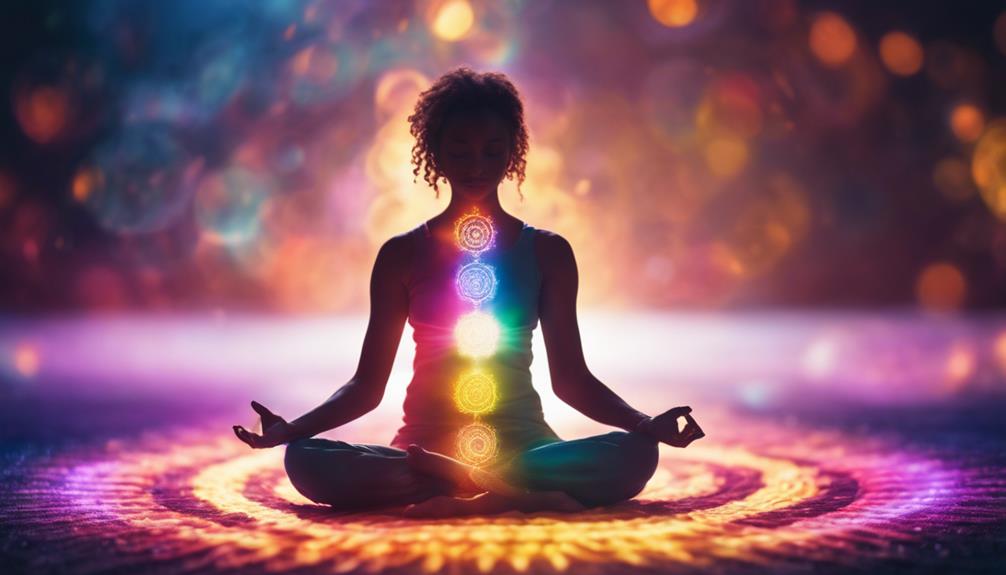Unlocking Your Inner Potential: The Strength of Spiritual Coaching
In the realm of personal growth, there exists a profound practice that can awaken our hidden potential and guide us towards a more meaningful existence.
Spiritual coaching, a transformative journey of self-discovery, offers a path to delve deep within, tapping into the wellspring of our inner strengths.
This powerful partnership between coach and client serves as a catalyst for growth, igniting the flame of spiritual connection and propelling us towards a life of fulfillment.
Step into this realm of possibility, and witness the extraordinary power of spiritual coaching unfold.
Key Takeaways
- A spiritual coach helps individuals achieve personal growth and a deeper spiritual connection.
- Hiring a spiritual coach can lead to personal growth, improved emotional well-being, and enhanced spiritual connection.
- Factors to consider when choosing a spiritual coach include qualifications, experience, and coaching approach.
- Working with the right coach leads to a successful coaching experience.
What is it?
I believe that spiritual coaching is a powerful tool for personal growth and deepening my spiritual connection. It provides me with guidance, support, and tools to overcome challenges and achieve my goals.
Spiritual coaching allows me to explore my spirituality and discover my purpose in life. It helps me gain a deeper understanding of myself and the world around me. Through this process, I am able to tap into my inner potential and unleash it fully.
Spiritual coaching creates a safe and supportive space for me to reflect, grow, and evolve. It helps me find clarity, inner peace, and a sense of fulfillment. By working with a spiritual coach, I am able to align my goals with my authentic self and take steps towards living a more meaningful and purposeful life.
Role and Qualities
Guiding individuals towards personal growth and a deeper connection, a spiritual coach possesses qualities such as empathy, compassion, and excellent communication skills. They play a crucial role in helping clients explore spirituality and find meaning in their lives. Through their guidance and support, clients can tap into their inner potential and unleash their true selves.
To better understand the role and qualities of a spiritual coach, let’s delve into a table that highlights the key aspects:
| Role of a Spiritual Coach | Qualities of a Spiritual Coach |
|---|---|
| Helps individuals connect to their spiritual selves | Empathy |
| Provides guidance and support | Compassion |
| Creates a safe and supportive environment | Excellent communication skills |
| Assists in overcoming challenges and achieving personal growth | Non-judgmental attitude |
Exploring spirituality and embarking on a spiritual journey can be a transformative experience. Finding the right spiritual coach is essential in this process. They can provide the guidance, tools, and support needed to navigate the complexities of spiritual growth. So, if you’re on a quest to unlock your inner potential, consider seeking the assistance of a spiritual coach.
Benefits of Spiritual Coaching
Enhancing personal growth and emotional well-being, spiritual coaching allows me to gain a deeper understanding of myself and my purpose in life. Through this powerful practice, I am able to tap into my inner potential and unleash my true capabilities.
Spiritual coaching has provided me with enhanced self-awareness, allowing me to uncover my hidden strengths and talents. It has also facilitated emotional healing and transformation, helping me overcome past traumas and limiting beliefs that held me back.
This journey of self-discovery has been truly enlightening, as I have been able to connect with my authentic self and align my actions with my values. Spiritual coaching has guided me towards inner peace and fulfillment, allowing me to live a more meaningful and purposeful life.
With the support and guidance of my spiritual coach, I have unlocked my true potential and embraced my unique gifts.
Frequently Asked Questions
How long does it typically take to see results from spiritual coaching?
In my experience, the timeframe for seeing results from spiritual coaching varies for each individual. The key factors that contribute to success include consistency, openness, and commitment to personal growth. Cultivating a positive and open mindset is crucial for optimal results in spiritual coaching.
Can spiritual coaching help with specific challenges, such as overcoming addiction or dealing with grief?
Yes, spiritual coaching can help with specific challenges like overcoming addiction and dealing with grief. By exploring the role of spirituality, we can find solace, inner strength, and a deeper understanding of ourselves, leading to healing and growth.
Is spiritual coaching suitable for people of all religious or spiritual beliefs?
Spiritual coaching embraces an interfaith approach, accommodating diverse religious beliefs. It addresses skepticism by focusing on personal growth and well-being, offering tools for self-reflection and inner strength. It’s a transformative journey that welcomes everyone on the path to self-discovery and fulfillment.
How often do clients typically meet with their spiritual coach?
Clients typically meet with their spiritual coach based on their individual needs and goals. Meeting frequency can vary, but it is common to have regular sessions, such as weekly or biweekly. Scheduling flexibility is important to accommodate clients’ availability and ensure consistent support.
Can spiritual coaching be done remotely, or is it typically done in person?
Yes, spiritual coaching can be done remotely and is just as effective as in-person coaching. The benefits of virtual spiritual coaching include convenience, accessibility, and the ability to connect with coaches from anywhere in the world.
Conclusion
In the realm of spiritual coaching, we embark on a journey of self-discovery, uncovering the dormant potential that lies within us.
Like a gentle breeze igniting a flame, spiritual coaching sets our souls ablaze, allowing us to rise above our limitations and embrace our true essence.
It is a transformative experience that guides us towards a profound connection with our spirituality, awakening the dormant power that resides within us.
As we delve deeper into this sacred practice, we unlock the door to a more fulfilling and purposeful life, where our true potential can be unleashed and our spirits soar.










